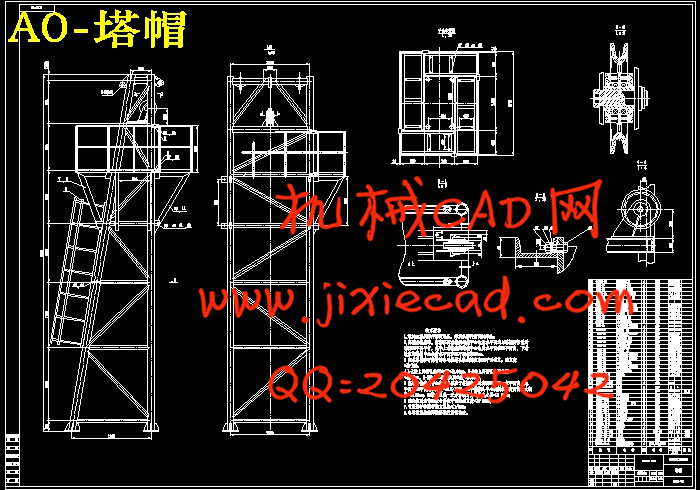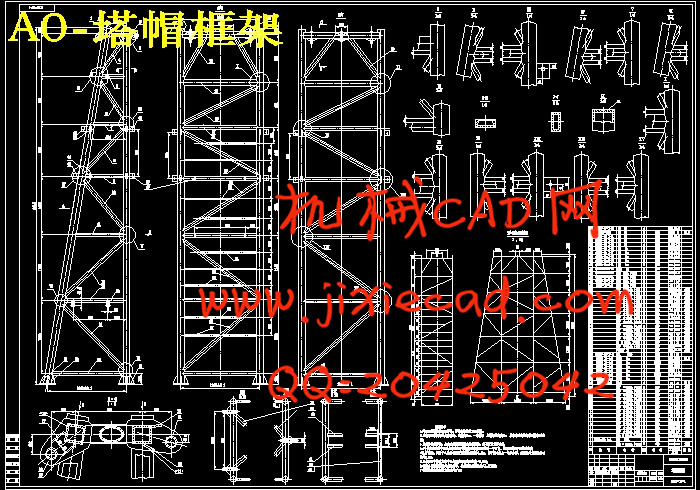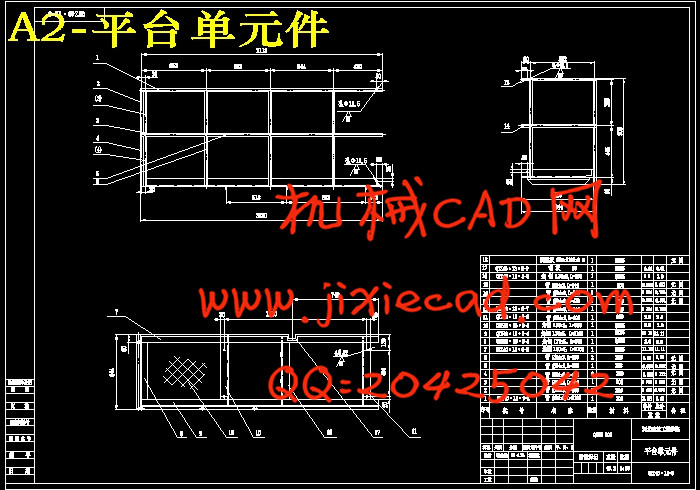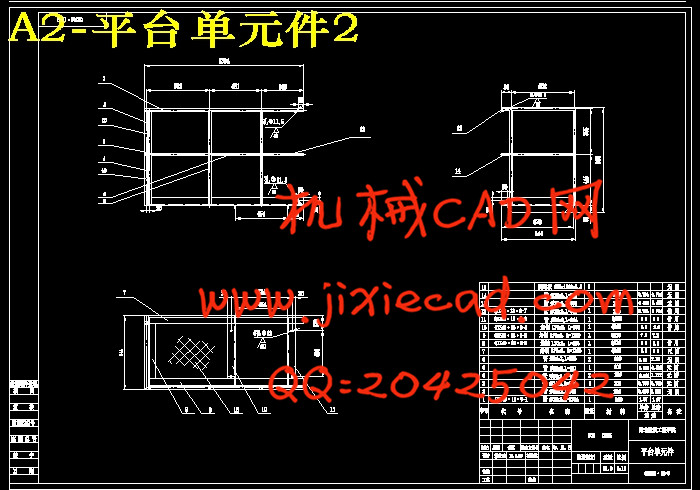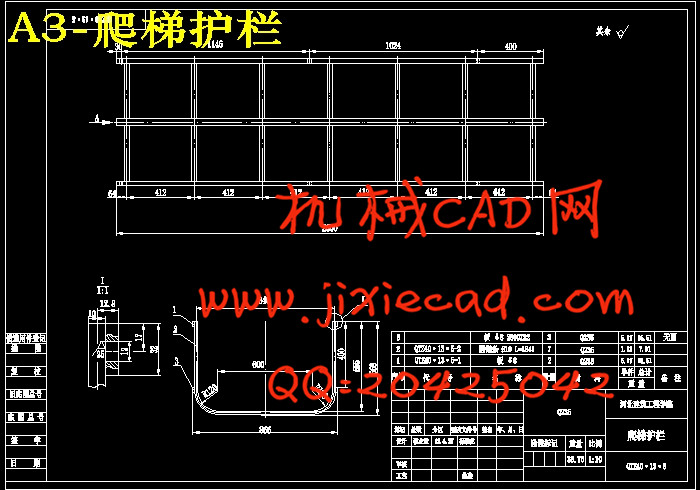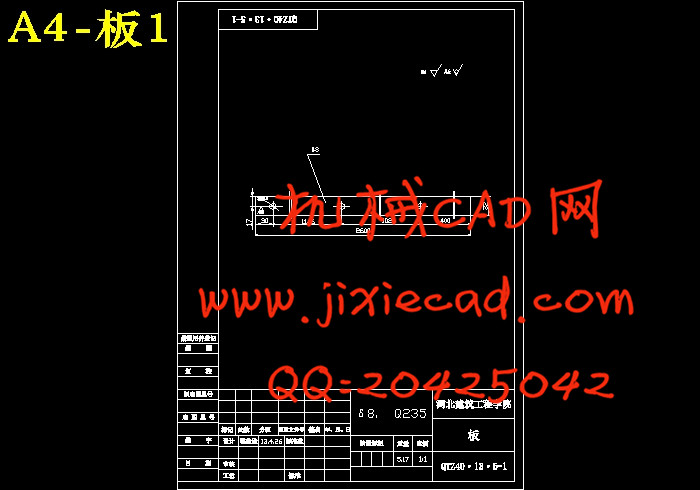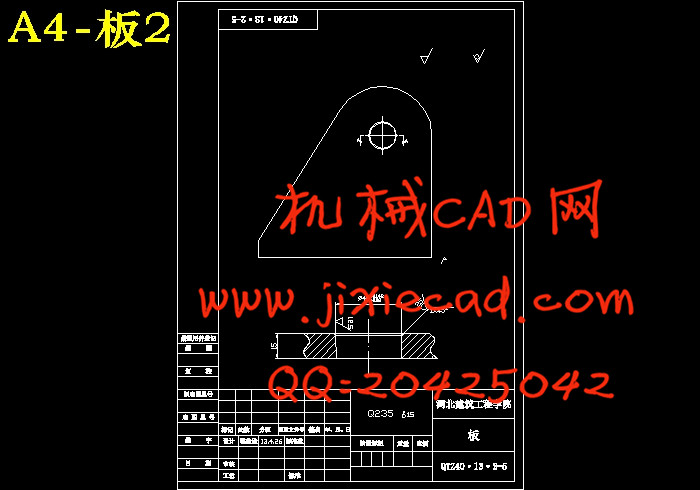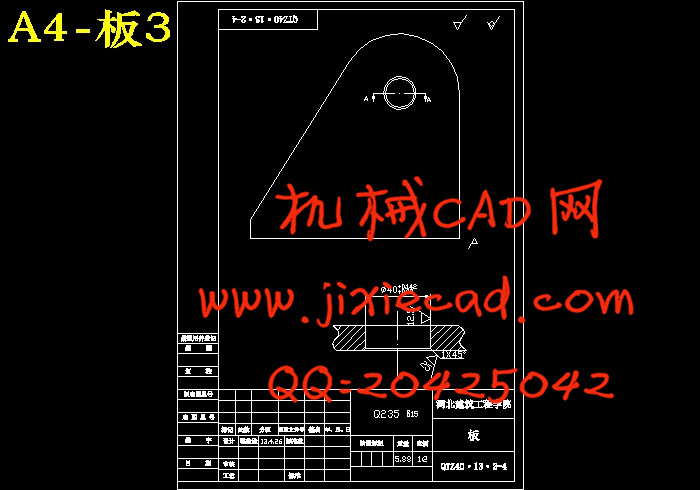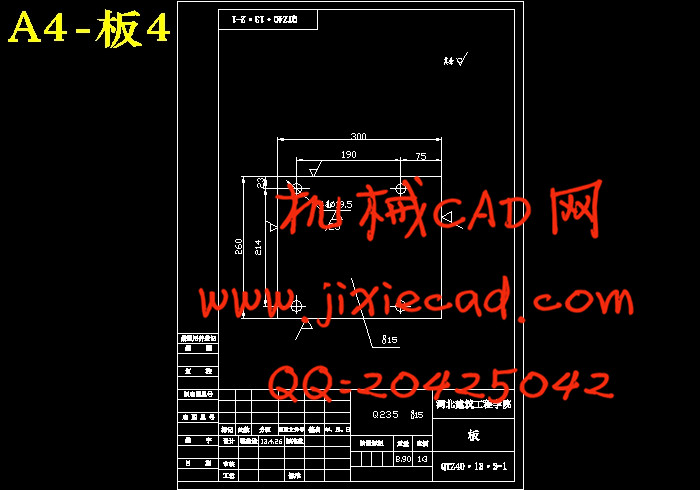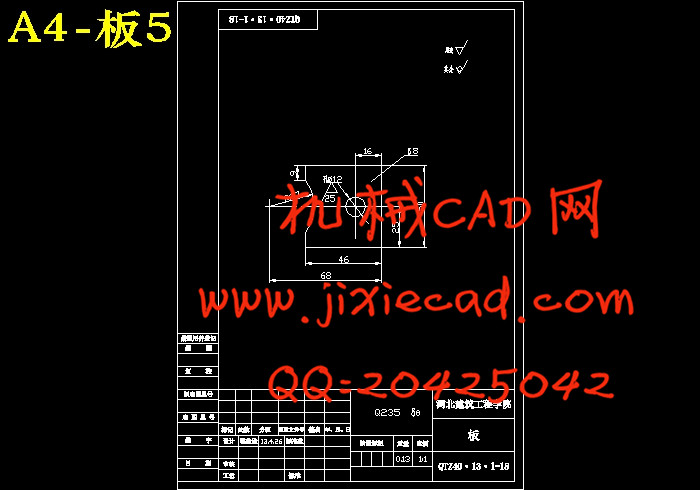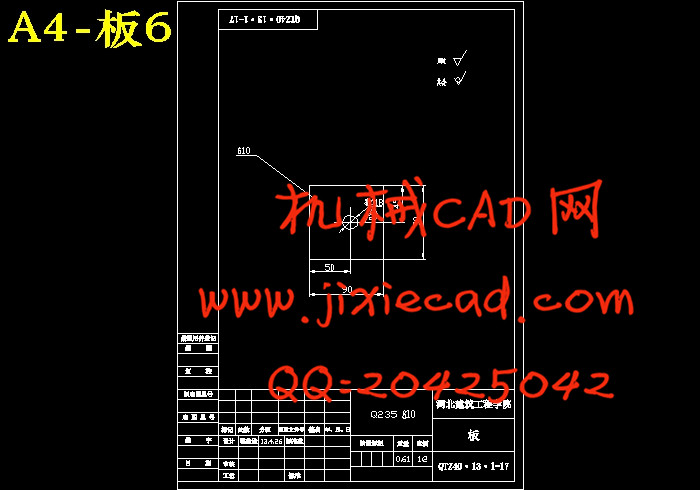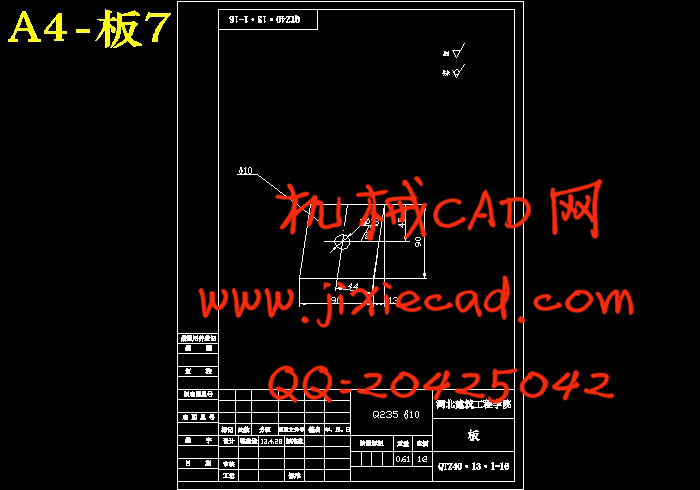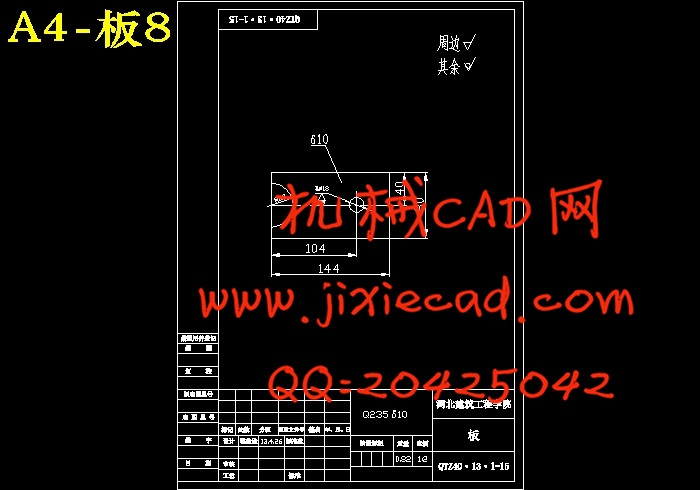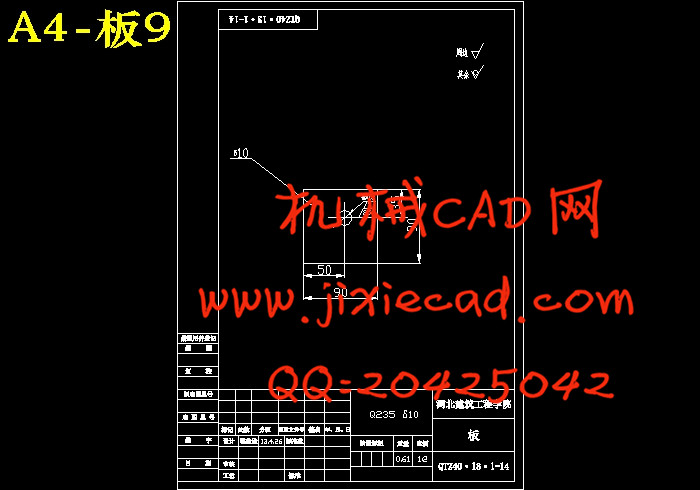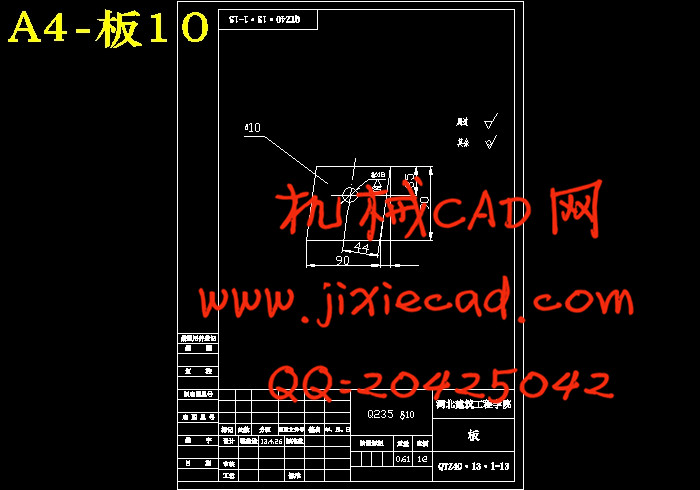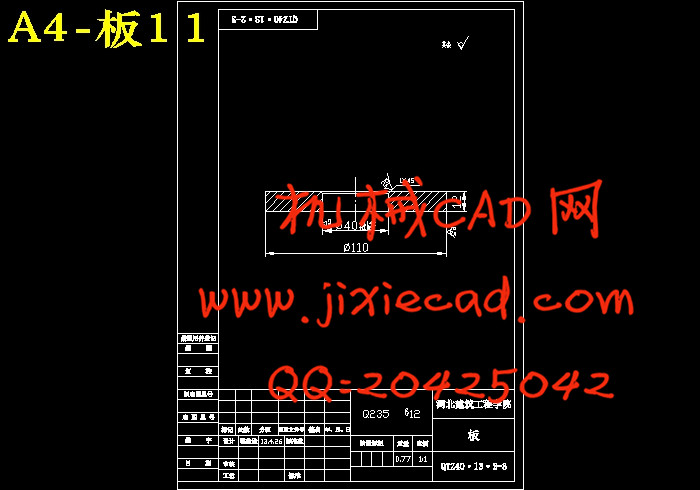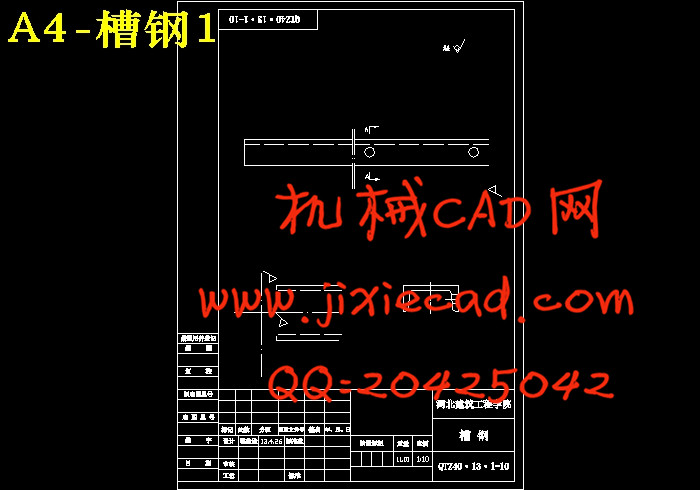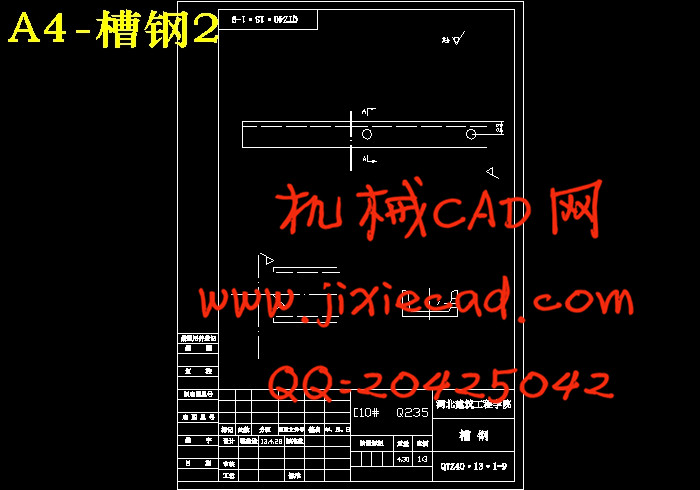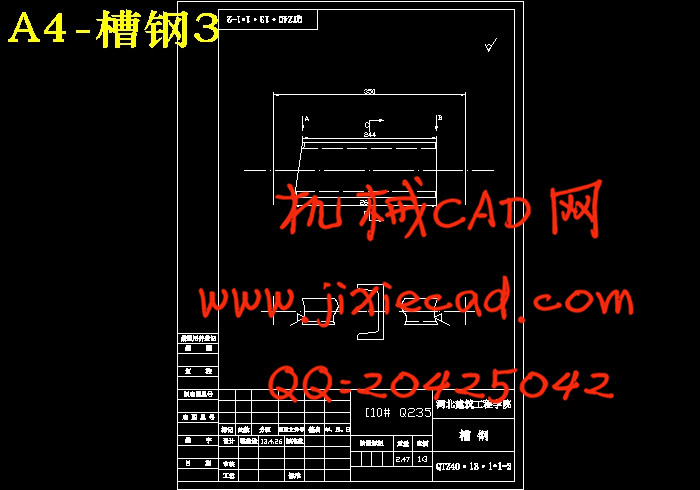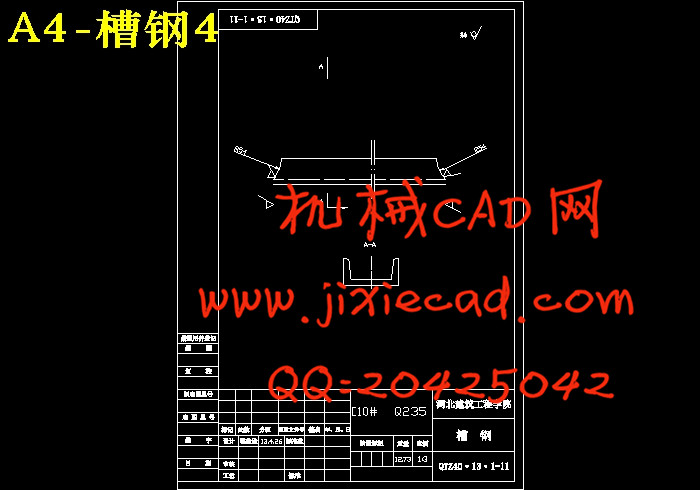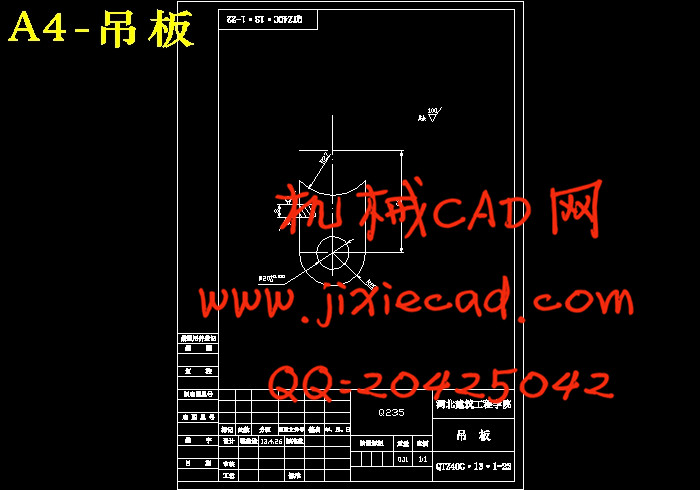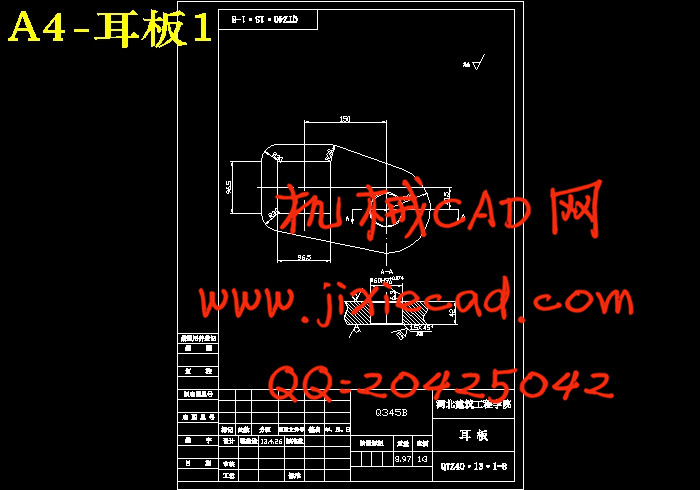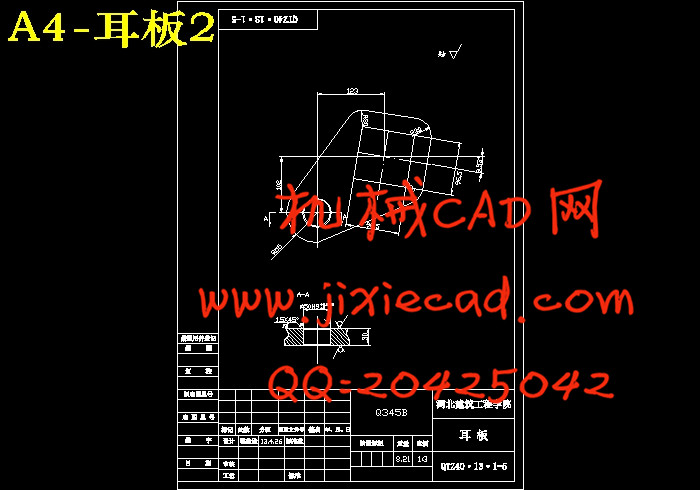设计简介
摘要
塔式起重机作为建筑施工的主要设备,在建筑等行业发挥着极其重要的作用。塔式起重机属于臂架型起重机,由于其臂架铰接在较高的塔身上,且可回转,臂架长度较大,结构轻巧、安装拆卸运输方便,适于露天作业,因此大多数用于工业与民用建筑施工。
本次设计在参照同类塔式起重机基础上,对QTZ40型塔式起重机进行总体设计及塔顶分析设计。在塔顶设计工程中,采用了有限元法对其进行分析计算,采用了ANSYS10.0软件进行分析。
按照整机主要性能参数,确定各机构类型及钢结构型式,主要确定了塔顶的结构参数。通过对塔顶作适当的简化,应用ANSYS10.0软件建立塔顶的有限元模型,施加各工况载荷,进行求解,进而可得各节点受力情况及各单元所受轴向力、轴向应力大小及各工况下塔顶的变形挠度大小,并能演示塔顶加载过程的动画,清晰的展现了各工况下塔顶的受力性能。
本设计为QTZ400塔式起重机总体及塔顶设计,主要分为以下几个方面: 首先,进行总体设计,包括平衡臂与平衡重计算、塔机风力计算和整机的抗倾覆稳定性计算;其次是塔顶的设计包括受力分析、结构简化、有限元分析、受力校核(包括校核强度、刚度和稳定性)等。
关键词:QTZ40型塔式起重机 塔顶 有限元分析 ANSYS10.0
Abstract
As an important facility, the tower crane plays an important role in construction industry. The tower crane belongs to the arm rack type crane. Its arm is hinged on the high tower body, and it may rotate. It has longer arm, dexterous structure. What’s more, it is easy to be assembled, disassembled and transported. It is suitable for the open-air work and mainly used for industry and civil construction
Based on the design of the similar tower crane, this design is composed of the system design and the tower top design of the QTZ40 tower crane. In the tower top design progress, it has carried Finite Element Method on the analysis computation, and used ANSYS10.0 software.
According to the entire machine main performance parameters, various organizations type and the steel structure pattern have been determined. Through the reasonable simplification of the tower top, the tower top finite element model is established by applying ANSYS10.0 software, and then it’s exerted various operating modes loads, and carried on the solution. Then ANSYS10.0 software can calculate various nodes stress situation, the axial stress various units receive, and the tower top distortion size under various operating modes. Also it can demonstrate the animation in the loads-carrying process on the tower top, which has clearly displayed the stress performance of the tower body under various operating modes.
The design for the QTZ400 tower crane and lifting the whole set of frame design, divided into the following aspects: First, to design, including the balance weight calculation, calculation and wind machine tower crane anti-tipping stability calculation; Secondly, tower top design, including tower top force analysis and model simplification and finite element analysis and check analysis (including strength check and stiffness check and stability check).
Key words: QTZ40 tower crane Tower top Finite element analysis ANSYS10.0
目录
第一章 前言·······················································1
1.1 塔式起重机概述··············································1
1.2 塔式起重机的发展趋势········································1
第二章 总体设计··················································2
2.1 概述························································2
2.2 确定总体设计方案············································2
2.2.1 金属结构················································2
2.2.2 工作机构···············································19
2.2.3 安全保护装置···········································27
2.3 总体设计设计总则···········································29
2.3.1 整机工作级别 ··········································29
2.3.2 机构工作级别···········································29
2.3.3主要技术性能参数······································· 30
2.4 平衡臂与平衡重的计算·······································30
2.5 起重特性曲线···············································32
2.6 塔机风力计算·············································· 34
2.6.1 工作工况Ⅰ·············································34
2.6.2 工作工况Ⅱ·············································38
2.6.3 非工作工况Ⅲ···········································40
2.7整机的抗倾翻稳定性·········································43
2.7.1工作工况Ⅰ·············································44
2.7.2工作工况Ⅱ·············································45
2.7.3工作工况Ⅲ·············································46
2.7.4工作工况Ⅳ·············································47
2.8固定基础稳定性计算·········································49
第三章 塔顶的总体结构和受力分析······························51
3.1 塔顶总体···················································51
3.1 塔顶尺寸设计···············································52
3.1 塔顶受力分析···············································53
第四章 塔顶的模型简化和有限元分析····························55
4.1 塔顶模型建立的几点简化及分析过程···························55
4.2 塔顶结构的有限元分析·······································55
4.2.1塔顶模型的建立·········································56
4.2.2有限元分析计算·········································57
第五章 塔顶受力校核
5.1 塔顶稳定性校核·············································71
5.2 塔顶刚度校核···············································72
5.3 塔顶强度校核···············································72
第六章 设计小结···········································73
·致谢·····························································75
主要参考文献····················································76
塔式起重机作为建筑施工的主要设备,在建筑等行业发挥着极其重要的作用。塔式起重机属于臂架型起重机,由于其臂架铰接在较高的塔身上,且可回转,臂架长度较大,结构轻巧、安装拆卸运输方便,适于露天作业,因此大多数用于工业与民用建筑施工。
本次设计在参照同类塔式起重机基础上,对QTZ40型塔式起重机进行总体设计及塔顶分析设计。在塔顶设计工程中,采用了有限元法对其进行分析计算,采用了ANSYS10.0软件进行分析。
按照整机主要性能参数,确定各机构类型及钢结构型式,主要确定了塔顶的结构参数。通过对塔顶作适当的简化,应用ANSYS10.0软件建立塔顶的有限元模型,施加各工况载荷,进行求解,进而可得各节点受力情况及各单元所受轴向力、轴向应力大小及各工况下塔顶的变形挠度大小,并能演示塔顶加载过程的动画,清晰的展现了各工况下塔顶的受力性能。
本设计为QTZ400塔式起重机总体及塔顶设计,主要分为以下几个方面: 首先,进行总体设计,包括平衡臂与平衡重计算、塔机风力计算和整机的抗倾覆稳定性计算;其次是塔顶的设计包括受力分析、结构简化、有限元分析、受力校核(包括校核强度、刚度和稳定性)等。
关键词:QTZ40型塔式起重机 塔顶 有限元分析 ANSYS10.0
Abstract
As an important facility, the tower crane plays an important role in construction industry. The tower crane belongs to the arm rack type crane. Its arm is hinged on the high tower body, and it may rotate. It has longer arm, dexterous structure. What’s more, it is easy to be assembled, disassembled and transported. It is suitable for the open-air work and mainly used for industry and civil construction
Based on the design of the similar tower crane, this design is composed of the system design and the tower top design of the QTZ40 tower crane. In the tower top design progress, it has carried Finite Element Method on the analysis computation, and used ANSYS10.0 software.
According to the entire machine main performance parameters, various organizations type and the steel structure pattern have been determined. Through the reasonable simplification of the tower top, the tower top finite element model is established by applying ANSYS10.0 software, and then it’s exerted various operating modes loads, and carried on the solution. Then ANSYS10.0 software can calculate various nodes stress situation, the axial stress various units receive, and the tower top distortion size under various operating modes. Also it can demonstrate the animation in the loads-carrying process on the tower top, which has clearly displayed the stress performance of the tower body under various operating modes.
The design for the QTZ400 tower crane and lifting the whole set of frame design, divided into the following aspects: First, to design, including the balance weight calculation, calculation and wind machine tower crane anti-tipping stability calculation; Secondly, tower top design, including tower top force analysis and model simplification and finite element analysis and check analysis (including strength check and stiffness check and stability check).
Key words: QTZ40 tower crane Tower top Finite element analysis ANSYS10.0
目录
第一章 前言·······················································1
1.1 塔式起重机概述··············································1
1.2 塔式起重机的发展趋势········································1
第二章 总体设计··················································2
2.1 概述························································2
2.2 确定总体设计方案············································2
2.2.1 金属结构················································2
2.2.2 工作机构···············································19
2.2.3 安全保护装置···········································27
2.3 总体设计设计总则···········································29
2.3.1 整机工作级别 ··········································29
2.3.2 机构工作级别···········································29
2.3.3主要技术性能参数······································· 30
2.4 平衡臂与平衡重的计算·······································30
2.5 起重特性曲线···············································32
2.6 塔机风力计算·············································· 34
2.6.1 工作工况Ⅰ·············································34
2.6.2 工作工况Ⅱ·············································38
2.6.3 非工作工况Ⅲ···········································40
2.7整机的抗倾翻稳定性·········································43
2.7.1工作工况Ⅰ·············································44
2.7.2工作工况Ⅱ·············································45
2.7.3工作工况Ⅲ·············································46
2.7.4工作工况Ⅳ·············································47
2.8固定基础稳定性计算·········································49
第三章 塔顶的总体结构和受力分析······························51
3.1 塔顶总体···················································51
3.1 塔顶尺寸设计···············································52
3.1 塔顶受力分析···············································53
第四章 塔顶的模型简化和有限元分析····························55
4.1 塔顶模型建立的几点简化及分析过程···························55
4.2 塔顶结构的有限元分析·······································55
4.2.1塔顶模型的建立·········································56
4.2.2有限元分析计算·········································57
第五章 塔顶受力校核
5.1 塔顶稳定性校核·············································71
5.2 塔顶刚度校核···············································72
5.3 塔顶强度校核···············································72
第六章 设计小结···········································73
·致谢·····························································75
主要参考文献····················································76


